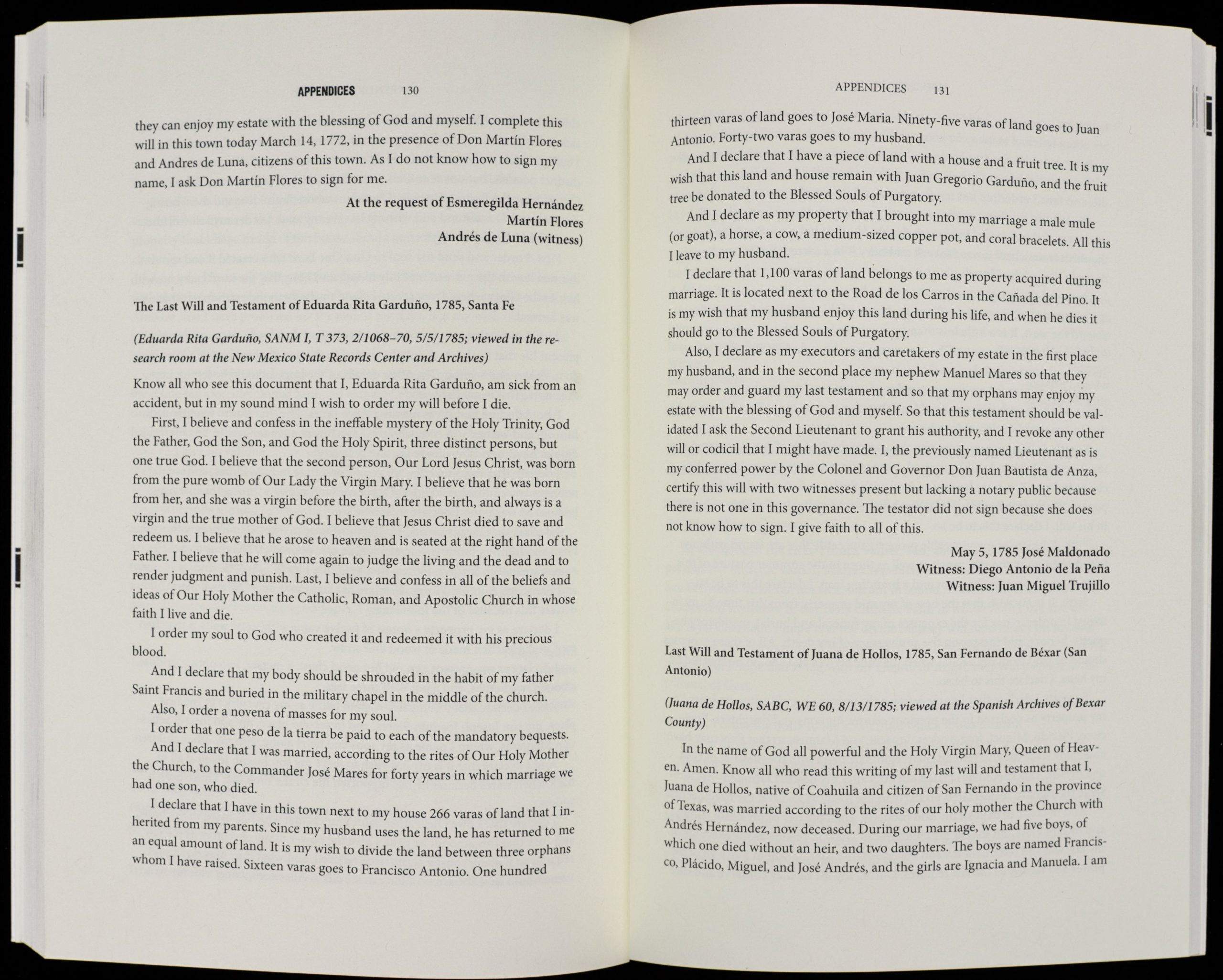Curriculum Connections: Latinx History, Women’s History, Women’s Rights
The source in this activity comes from the book Their Lives, Their Wills: Women in the Borderlands, 1750-1846 by Amy M. Porter in the Newberry’s collection. The original document is at the New Mexico State Records Center and Archive.
Download a copy of this activity and a transcript of the text in the Downloads tab.

Questions
- What kind of source is this?
- An official document, a will
- Is it a primary source?
- Yes, because Eduarda Rita Garduño tells us about herself, what she did and what she owned and what she wanted.
- What information about Eduarda Rita Garduño can you find in this excerpt?
- She was alive in 1785 and had been married for forty years, so she was born in the early 1700s.
- She was married to Commander José Mares and had one child who died. She raised three orphans. She was Catholic.
- What information can you find about what she owned?
- She owned 266 varas of land that she inherited from her parents; a piece of land with a house and a fruit tree; 1,100 varas of land that she acquired during her marriage; a male mule (or goat), a horse, a cow, a copper pot, and some coral bracelets.
- Who did she leave her belongings to?
- The orphans she raised and her husband.
- What questions do you have after reading this?
- How much land is a vara?
- If she was married to a man named Commander Vares, why is her last name Garduño, and who is Juan Gregorio Garduño?
- How did she acquire the 1,100 varas of land during her marriage?
Class Discussion
Using the information in the “Background” section below, explain to students that the laws were in force in many places until at least the nineteenth century that prevented married women from owning property. Then discuss how Eduarda Garduño’s situation was different and how her personal financial authority may have affected her life.
Background
Historically, married women in many countries have not been allowed to own property, sign contracts, make wills, or otherwise control any part of their financial lives. If a single woman who owned property got married, her husband became the owner of that property. If a married woman inherited property, her husband became the owner of that property. This was true in the United States until 1839, when Mississippi passed the Married Women’s Property Act, which said that a woman could own property that could not be seized for her husband’s debts. Gradually, other states began to pass similar laws and, by the 1870s, most married women in the U. S. had some control over their own property.
Texas and California, both influenced by Spanish legal traditions, had more progressive laws earlier than the other states. In Spain, married women were allowed to own property privately, although most of the family’s money was managed by the husband. Spain also had a stronger history of adoption, although it was often informal.
Additional Resources
Enstam, Elizabeth York. “Women and the Law,” Texas State Historical Association.



